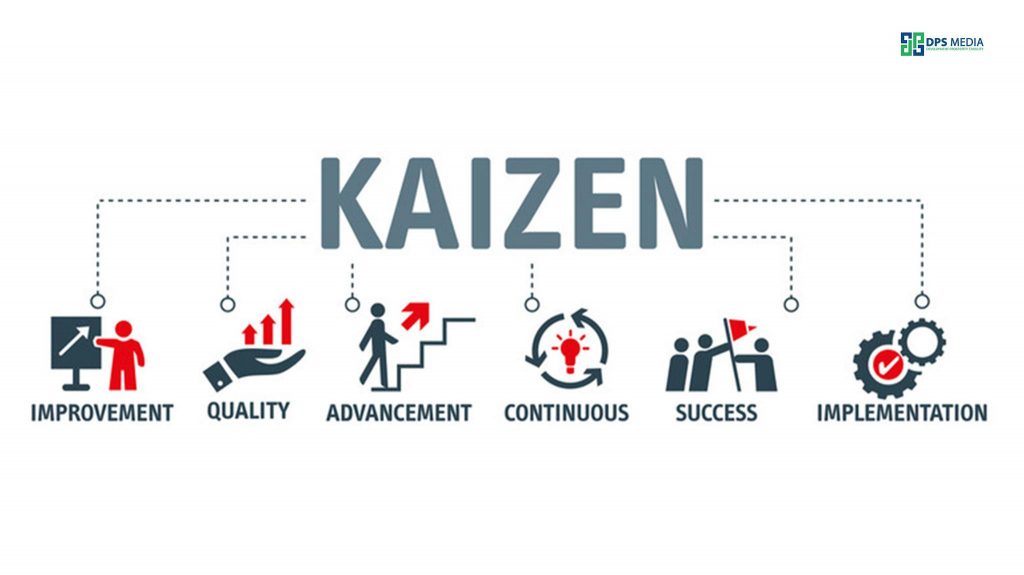Organizations increasingly need to transform into learning organizations in our fast-paced environment. The trend for continuous improvement has helped the first generation of learning organizations to develop, with concepts like kaizen and quality circles spreading quickly across the industrial industry.

The second-generation learning organization then made sure that they could experiment with new things while simultaneously keeping their power in their present market in an effort to escape the so-called innovator's dilemma, which sees organizations broadsided by new entrants appearing out of left field.
The third generation of learning organizations seeks to drastically accelerate the rate at which knowledge is assimilated and presumptions are challenged in light of the global and complicated nature of many enterprises today. Numerous firms hold this desire, but Deloitte research reveals that many still have a long way to go before the vision is achieved.
The research notes that "Organizations are [slowly] just beginning to appreciate the magnitude and the tremendous consequences for job design, reskilling, and work re-invention involved in integrating humans and technology more widely across the workforce."
Getting used to the new world
A new learning and engagement platform was developed at the visual content maker and marketplace Getty Images with the goal of ensuring that individuals have access to the skills they need to succeed in a fast-paced environment.

According to Kate Philpot, Senior Director, Global Sales & Service Enablement at Getty Images, "there is a continuous and continuing need to train individuals and keep their skills fresh." We must make sure that our personnel are providing the correct information to customers when they speak to them since both the outer world and the larger market are changing quickly.
Active learning
The so-called "learning pyramid" serves as the foundation for the new platform structure because of how complicated workers' work and learning processes are. This shows that conventional teaching approaches, such lectures and reading alone, are ineffective at promoting retention and that a more diverse approach that includes demonstration, debate, and practice is necessary to fully assimilate material. The learning pyramid does indeed imply that teaching something to someone else is the greatest way to learn it. It entails a broad transition away from passive learning toward more active learning whereby employees actively participate rather than only consume information.
According to Philpot, "We truly want to deliver learning via many paths." Because selling and customer service are practical tasks, you could read documentation sometimes, talk about examples of excellent practice, or participate in role-playing games that let you observe and try out different strategies.
The new learning and engagement platform promises to transform the art of learning into a process that changes based on the direct and indirect input from users by giving a sophisticated way to track precisely what employees have learned and how they have learnt it.
A collaborative approach
The new platform was created in collaboration with WorkRamp, a US-based provider of learning management software. The project team spent a lot of time talking with stakeholders to understand their goals and gain their feedback on the project in order to guarantee the platform was delivered smoothly.

In order to understand the end users' decision-making criteria as well as their existing and prospective burden, Philpot says, "We spent a lot of time talking to our IT team, our legal colleagues, the buying team, and end users." "We actually delivered a smooth transition from one platform to the other by investing time at the onset to understand the demands and also the capability across a broad workforce."
Along with the broad stakeholder involvement, it was essential to choose a partner that would be approachable and responsive, particularly in light of the sector's and learners' demands' quick rate of change. They intended to build an engaging platform for staff members as well as a backend that would make it simple for subject matter experts to post content and managers to develop or obtain reports on the team's learning results.
“One of the first things we did was to construct a Guide (WorkRamp's word for a training module) to the platform and enroll everyone so that they could engage with the new capabilities like the quizzes and matching games right away and understand what the platform offers.” Philpot explains, "In addition to this, we also produced a Guide for content producers, since we understood we wanted to make the platform as simple to use as possible to increase use of the platform."
Therefore, if managers or workers want to create a training program for their team, they now have the platform and the assistance to enable them to create the material, teach their team, and then obtain trustworthy and solid statistics on how they fared throughout the training. Managers may use this analytics backend to make sure that their staff is staying current with learning and development requirements.
According to Philpot, "the new platform enables any manager of a team to access a dashboard, which includes all of that team's members, their enrolments, those completed, and those outstanding." "The manager may then, with the touch of a button, send an email to remind individuals with unpaid enrollments and assist them on their way."
Demonstrating a return on investment
The capacity to demonstrate the return on investment of the platform and of learning and development in general is influenced by the emphasis on metrics and analytics. This has always been the goal of L&D professionals, but with the economy under cost challenges, it's become more crucial that significant expenditures can be made in a way that makes sense.
While an increasing number of firms are attempting to calculate the return on their investment in skills, the majority of these initiatives get caught evaluating more arcane indicators, such as satisfaction, according to the CIPD's Learning and Skills at Work study. In fact, they draw attention to the fact that just 14% of firms use metrics that are directly related to business strategy.
It was crucial that the final choice would allow the organization to examine the return on investment through the prism of the strategic goals of the business. This necessity to justify the expenditure was a consideration in the creation of the new platform as well. An organization wants to be able to transform these raw statistics into a commercial effect, thus it's one thing to state that thousands of training modules have been completed.
"Our new platform has features that allows us to track training completion among staff, whereas our prior platform had none that allowed us to probe the return on investment," says Philpot. "Since completion involves a review of each employee's capabilities, we can begin to examine how it translates into their output at work.”
It used to be highly challenging to evaluate people's knowledge, making it hard to determine what information and/or skills are being used at work. With the new platform, it is much simpler to see a direct correlation between a person's performance and the talents they now possess or are working to build. This establishes a clear link between the learning they do and the money they may make for the company.
Including learning in the workplace
The ultimate goal is to establish a genuine learning culture in which staff members actively participate in both their own and their coworkers' professional growth rather than only receiving education from outside sources.

The platform appears to be significantly increasing staff engagement, according on the preliminary data. Since it went online in March 2022, 238 new pieces of learning content, comprising 134 distinct training modules and 38 knowledge assessments, have been produced. The 1,800 or so staff had finished approximately 12,000 training modules in total, indicating a high degree of platform engagement.
Although the initiative is still in its early stages, there are big intentions to start integrating learning into all facets of the company. For instance, a yearly certification procedure for sales people is being considered to demonstrate that they not only possess good sales abilities but also have comprehensive understanding of the business and its most recent items.
Since the initiative is supported by the company's leadership values, which include a growth mentality, a dedication to the business, and a desire to learn something new every day, commitment to learning may ultimately have an impact on things like remuneration and promotion.
The type of "going the extra mile conduct" that would be acknowledged, according to Philpot, is when individuals approach us proactively and say, "I'd want to develop a Guide on this issue."
The goal, according to Einstein's famous observation, is to create the environments in which individuals may successfully learn. It is crucial to provide the circumstances necessary for firms to transform into learning organizations. Getty Images is still in the early phases of its voyage, but they are optimistic they will arrive at their destination.
Source: hrdconnect.com








